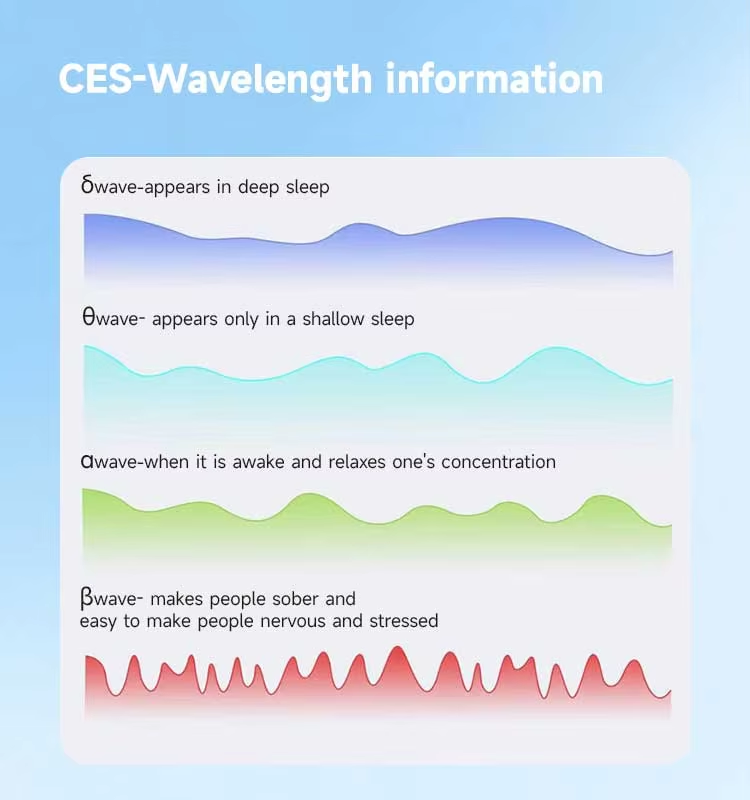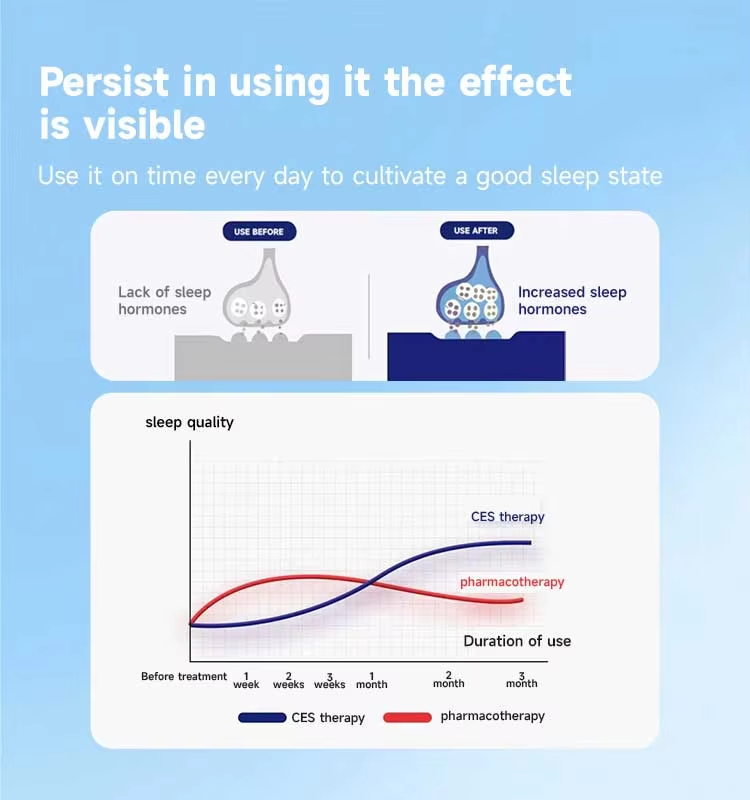CES stands for Cranial Electrotherapy Stimulation, also referred to as "Transcranial Microcurrent Stimulation." It is a physical therapy method that has obtained FDA safety certification, generally considered to have no side effects when used as directed. The core principle of CES involves using low-intensity microcurrents to gently and diffusely stimulate the brain’s limbic system, mimicking the body’s natural wave frequencies. This stimulation works to adjust irregular brain waves, potentially supporting deeper sleep. Additionally, it may help enhance the brain’s secretion of endorphins—natural substances that contribute to regulating mood and promoting a sense of calm. Overall, CES aims to support the brain’s natural regulatory functions, fostering a more balanced state that can aid in maintaining relaxation and comfort.

Sleeplessness is closely tied to the brain’s electrochemical signals, where neurotransmitters act as messengers to regulate the switch between wakefulness and sleep. When these signals are out of balance, it can disrupt the natural rhythm of falling and staying asleep. CES works by using gentle electrotherapy to safely modulate these electrochemical signals. By subtly influencing the brain’s signaling pathways, it helps restore a more balanced state—supporting the neurotransmitters involved in promoting sleep and calming wakefulness. This rebalancing effect creates conditions more conducive to drifting off and maintaining restful sleep.

Moods and emotions, including feelings of anxiety, are regulated by the brain’s electrochemical signals, which rely on a balance of neurotransmitters and hormones. When these signals are disrupted, it can affect emotional stability. The CES AT-9 machine addresses this by delivering gentle low-frequency electrical pulses that interact with the brain’s neural pathways. This subtle stimulation helps encourage the brain’s natural regulatory processes, supporting a more balanced state of signaling. Over time, this can foster a greater sense of calm, as the body’s mechanisms for managing emotional responses are gently assisted—promoting relaxation and easing feelings of tension.










